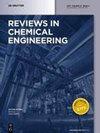Pickering乳液作为传统聚合物的替代品:趋势和应用
IF 4.9
3区 工程技术
Q1 ENGINEERING, CHEMICAL
引用次数: 0
摘要
摘要皮克林乳剂因其制备简单、稳定性好等特点而受到越来越多的关注。与传统乳剂不同的是,皮克林乳剂中的稳定剂是积聚在液相表面的固体微/纳米颗粒。除了稳定性外,皮克林乳剂毒性较小,对外部刺激反应灵敏,这使它们成为多功能材料,可以灵活地设计用于特定应用,例如催化,制药和新材料。经典乳化剂的潜在毒性和对环境的不利影响与水乳化剂的可提取性有关。某些乳化剂的作用不仅与其化学性质有关,而且与其稳定性有关;一些乳化剂经过碱或酸水解后,会变成硫酸盐和脂肪醇,对水生生物有危险。本文综述了近年来在皮克林乳液制备方面的研究进展,重点介绍了苯乙烯作为皮克林乳液的主要成分之一。此外,还讨论了乳状液的颗粒类型、形态以及乳状液生产工艺的关键参数对乳状液性能和应用的影响。此外,还介绍了皮克林乳剂在锂离子电池和新型疫苗等方面的应用现状和前景。本文章由计算机程序翻译,如有差异,请以英文原文为准。
Pickering emulsions as an alternative to traditional polymers: trends and applications
Abstract Pickering emulsions have gained increasing interest because of their unique features, including easy preparation and stability. In contrast to classical emulsions, in Pickering emulsions, the stabilisers are solid micro/nanoparticles that accumulate on the surfaces of liquid phases. In addition to their stability, Pickering emulsions are less toxic and responsive to external stimuli, which make them versatile material that can be flexibly designed for specific applications, e.g., catalysis, pharmaceuticals and new materials. The potential toxicity and adverse impact on the environment of classic emulsions is related to the extractable nature of the water emulsifier. The impacts of some emulsifiers are related to not only their chemical natures but also their stabilities; after base or acid hydrolysis, some emulsifiers can be turned into sulphates and fatty alcohols, which are dangerous to aquatic life. In this paper, recent research on Pickering emulsion preparations is reviewed, with a focus on styrene as one of the main emulsion components. Moreover, the effects of the particle type and morphology and the critical parameters of the emulsion production process on emulsion properties and applications are discussed. Furthermore, the current and prospective applications of Pickering emulsion, such as in lithium-ion batteries and new vaccines, are presented.
求助全文
通过发布文献求助,成功后即可免费获取论文全文。
去求助
来源期刊

Reviews in Chemical Engineering
工程技术-工程:化工
CiteScore
12.30
自引率
0.00%
发文量
37
审稿时长
6 months
期刊介绍:
Reviews in Chemical Engineering publishes authoritative review articles on all aspects of the broad field of chemical engineering and applied chemistry. Its aim is to develop new insights and understanding and to promote interest and research activity in chemical engineering, as well as the application of new developments in these areas. The bimonthly journal publishes peer-reviewed articles by leading chemical engineers, applied scientists and mathematicians. The broad interest today in solutions through chemistry to some of the world’s most challenging problems ensures that Reviews in Chemical Engineering will play a significant role in the growth of the field as a whole.
 求助内容:
求助内容: 应助结果提醒方式:
应助结果提醒方式:


